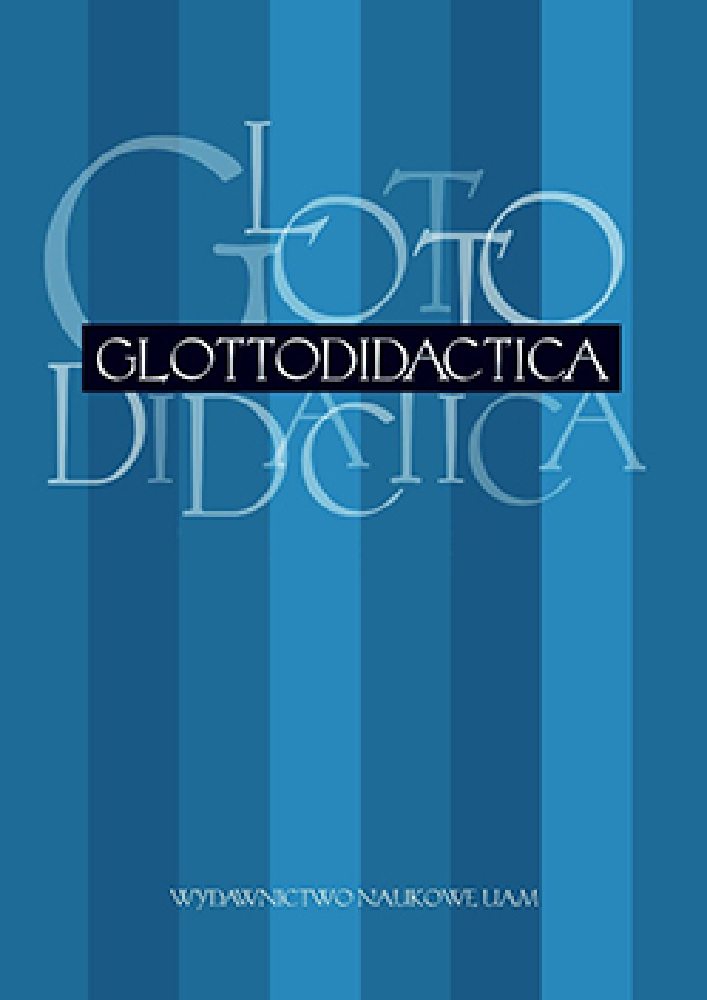Abstract
The article concentrates on the lexical and terminological features of the language of motorization. The analysis is based on the catalogues published by one of the leading passenger car producers in Germany and employs the perspective of specialist translation from German into Polish. The problems discussed in the article include loanwords, specialist jargon and the issues of synonymia and polysemy. The texts selected for the analysis and their specific linguistic and cultural features may serve as an interesting teaching material for specialist translation courses in philological translation studies.
Literaturhinweise
Fluck, H.-R. 1996. Fachsprachen. 5. Auflage. Tübingen-Basel: Francke.
Fraas, C. 1997. Lexikalisch-semantische Eigenschaften von Fachsprachen. In: Hoffmann, L., Kalverkämper, H., Wiegand (Hrsg.). Fachsprachen Languages for Special Purposes. Berlin–New York: de Gruyter, 428–438.
Gläser, R. 1990. Fachtextsorten im Englischen. Tübingen: Narr.
Göpferich, S. 1995. Textsorten in Naturwissenschaften und Technik. Tübingen: Narr.
Grucza, S. 2008. Lingwistyka języków specjalistycznych. Warszawa: Euro-Edukacja.
Hoffmann, L. 1985. Kommunikationsmittel Fachsprache. Eine Einführung. Tübingen: Narr.
Kielar, B.Z. 2000. O tłumaczeniu tekstów specjalistycznych. In: Kielar, B.Z. et al. (Hrsg.). Problemy komunikacji międzykulturowej. Lingwistyka, translatoryka, glottodydaktyka. Warszawa: Graf-Punkt, 235–246.
Kubacki, A. 2007. Problemy tłumaczenia niemieckojęzycznych dokumentów samochodowych. In: Piotrowska, M. (Hrsg.). Współczesne kierunki analiz przekładowych. Język a Komunikacja 18. Kraków: Tertium, 121–132.
Mańczak-Wohlfeld, E. 1995. Tendencje rozwojowe współczesnych zapożyczeń angielskich w języku polskim. Kraków: Universitas.
Möhn, D., Pelka, R. 1984. Fachsprachen. Eine Einführung. Tübingen: Niemeyer.
Roelcke, T. 2010. Fachsprachen. 3. Auflage. Berlin: Erich Schmidt Verlag.
Sauberer, G. 2009. Was ist Qualität – und Wer soll sie bezahlen? Kriterien und Verfahren zur Qualitätssicherung im Übersetzungsgeschäft am Beispiel der Automobilindustrie. In: Baur, W., Kalina, S., Mayer, F., Witzel, J. (Hrsg.). Übersetzen in die Zukunft. Berlin: BDÜ, 320–326.
Schmitt, P.A. 1985. Anglizismen in den Fachsprachen. Heidelberg: Winter.
Schmitt, P.A. 1987. Fachtexte für die Übersetzer-Ausbildung: Probleme und Methoden der Textauswahl. In: Ehnert, R., Schleyer, W. (Hrsg.). Übersetzen im Fremdsprachenunterricht. Regensburg: DAAD, 111–151.
Schmitt, P.A. 1999. Translation und Technik. Tübingen: Stauffenberg.
Wilss, W. 2007. Die Fachübersetzung. Annäherungen an einen komplexen übersetzungspraktischen Begriff. In: Lebende Sprachen 52, Heft 3/2007, 110–118.
Zmarzer, W. 2003. Typologia tekstów specjalistycznych. In: Kielar B.Z., Grucza, S. (Hrsg.). Lingwistyczna identyfikacja tekstów specjalistycznych. Języki Specjalistyczne 3. Warszawa: KJS, 24–34.
Lizenz
Authors
Authors of texts accepted for publication in Glottodidactica are required to complete, sign and return to the editor's office the Agreement for granting a royalty-free license to works with a commitment to grant a CC sub-license.
Under the agreement, the authors of texts published in Glottodidactica grant the Adam Mickiewicz University in Poznań a non-exclusive, royalty-free license and authorize the use of Attribution-NoDerivatives 4.0 International (CC BY-ND 4.0) Creative Commons sub-license.
The authors retain the right to continue the free disposal of the work.
Users
Interested Internet users are entitled to use works published in Glottodidactica since 2016, under the following conditions:
- attribution - obligation to provide, together with the distributed work, information about the authorship, title, source (link to the original work, DOI) and the license itself.
- no derivatives - the work must be preserved in its original form, without the author's consent it is not possible to distribute the modified work, such as translations, publications, etc.
Copyrights are reserved for all texts published before 2016.
Miscellaneous
Adam Mickiewicz University in Poznań retains the right to magazines as a whole (layout, graphic form, title, cover design, logo etc.).




